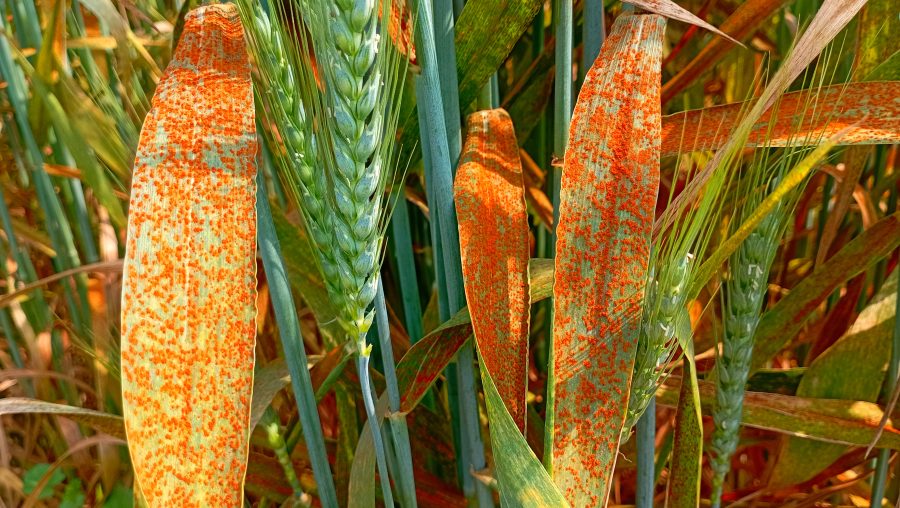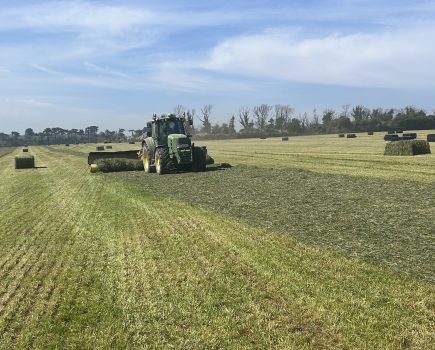This month’s contribution comes from Simon Roberts.
For what has felt like a relatively cool and wet season, there was an alarming amount of brown rust appearing in susceptible wheat varieties at the end of April. The disease thrives on 15 to 22 degree temperatures, which is why it usually appears late in the season.
This year’s early drilled, fertile sites and lack of cold temperatures brought us the perfect brown rust storm on the south coast. Fortunately, we still have Tebuconazole to eradicate it swiftly and this has been applied as a T1.5 spray; what would we do without it?
For now, the rust is under control, but product selection at flag leaf and ear spray and focusing on improved coverage will be crucial for longer lasting protection. To achieve this, consider increasing water volumes up to 200L/ha and keeping forward speeds down as this will direct the spray down through the canopy onto leaf 2 and 3 as well as getting into the leaf axil. As all fungicides are acropetal (move towards the leaf tip), poor coverage at the base of the leaf is highlighted by disease reinfection at this point.
While brown rust has been a focus in a few varieties, the spotlight remains on Septoria Tritici as it continues to thrive in these perfect conditions. We have had a good year for new fungicide registrations, with two new actives available. Isoflucypram (Bayer) was registered before the start of the season, and Pydiflumetofen (Syngenta) gained registration in time for the flag leaf spray. They are both carboximide chemistry and trials results show they will prove to be a positive addition to the fungicide options we already have available.
If the unsettled weather continues into June, we may well need to consider a more septoria-active ear spray, as well as the usual focus on rust top up and fusarium suppression.
Quality wheats
With good milling wheat premiums available, we approach the last opportunity to fine tune the nitrogen input to ensure the required protein level is achieved. Some contracts don’t allow foliar nitrogen applications, so this will have been taken into consideration with extra solid nitrogen.
Obviously, a good helping of sunshine will be required to fulfil the yield potential and then decisions on which crops will get the final top up of 40kg of liquid nitrogen will be made. Where liquid is being used, avoid intense sunlight, windy conditions and high temperatures to avoid any scorch.
Spring crops
Spring crops following over-wintered cover crops have been under heavy slug pressure. Wherever sheep have grazed the cover crop, there has been a noticeable reduction in slug activity and this has been efficient in reducing the biomass and converting it into a utilisable form of nutrient for the following crop.
Maize growth, and ultimately final yield, is impacted if it has to compete against weeds during its early development. Pre-emergence herbicides have been used more widely this year as moist seed beds provide the best opportunity to get the most out of the chemistry. With an increase in inter-row cropping of ryegrass, the follow up contact herbicides will need careful consideration; avoid the use of grass weed-specific herbicides with residual activity.
With various Sustainable Farming Incentive (SFI) options being planted recently, they too succumb to the same issues and there is a need to ensure that they are monitored to ensure they establish well and aren’t being eaten by slugs or smothered out by an overpowering weed burden.







